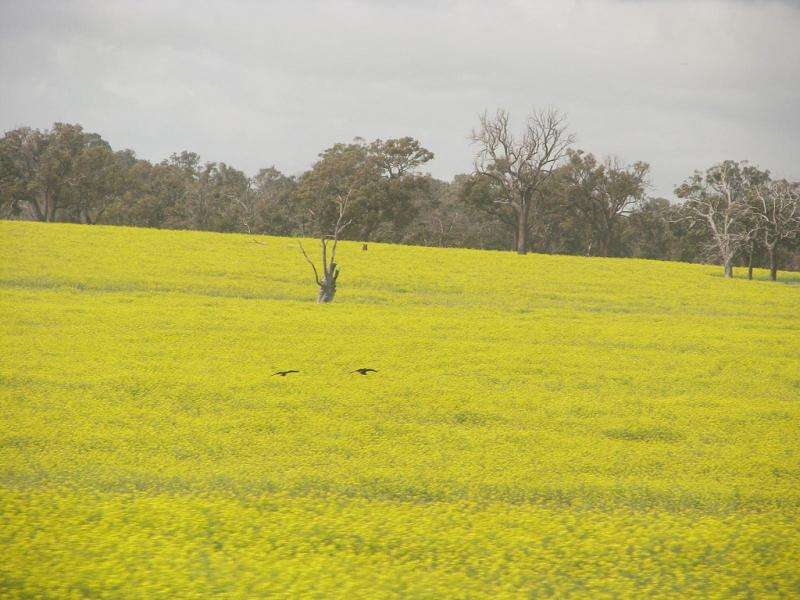Assessing GM canola's threat to native bushland

Can genetically modified (GM) canola (Brassica napus) survive outside a controlled paddock environment, and is it a biodiversity threat to our remnant bushland?
Scientists have been researching this very question since 2009, when WA farmers were granted an exemption to the moratorium on the planting of GM canola.
According to University of Western Australia (UWA) plant biologists Dr Roberto Busi and Professor Stephen Powles the simple answer is no.
Results from their four-year study investigating the demographics of transgenic glyphosate-resistant canola have quashed concerns that GM canola is competitive enough to survive in a natural bushland environment.
In fact, it only took three years for the displaced canola to become extinct, Dr Busi says.
The study tracked the survival of canola seeds that had blown from paddock windrows into nearby remnant bushland in WA's central Wheatbelt.
After the first year of plant establishment in the remnant bushland Dr Busi counted up to 30,000 seeds that all could have germinated in the following year.
However, after three years, no canola plants were visible.
"We believe the inability of the canola to survive in the long term was a combination of factors including attacks by insects, such as aphids and ants, attacks by vertebrate herbivores, such as rabbits, and fungal disease," he says
"Also drought conditions, and competition from other weeds such as ryegrass and brome grass played a part in the extinction of the plant.
"Our conclusion is that the study clearly shows there is no risk of transgenic glyphosate-resistant canola becoming a biodiversity risk."
The study also investigated GM canola plant survival rates on metropolitan road verges, particularly around grain delivery sites.
Where road verges were maintained using only glyphosate to control weeds, transgenic glyphosate-resistant canola obviously flourished, Dr Busi says.
"We surveyed a three kilometre strip near Co-operative Bulk Handling's Metro Grain Centre in Forrestfield, and because of grain spillages in the area, there were many weeds on the verges," he says.
"Because glyphosate is used on roadsides to control weeds, it had removed every other weed apart from canola volunteers and allowed those plants to survive and reproduce."
Dr Busi says the findings from the study would be used to encourage Main Roads WA and local governments to use other herbicide groups to maintain road verges to combat volunteer transgenic glyphosate-resistant canola and other weeds.
The study was funded by the Grains Research and Development Corporation.
Provided by Science Network WA
This article first appeared on ScienceNetwork Western Australia a science news website based at Scitech.



















